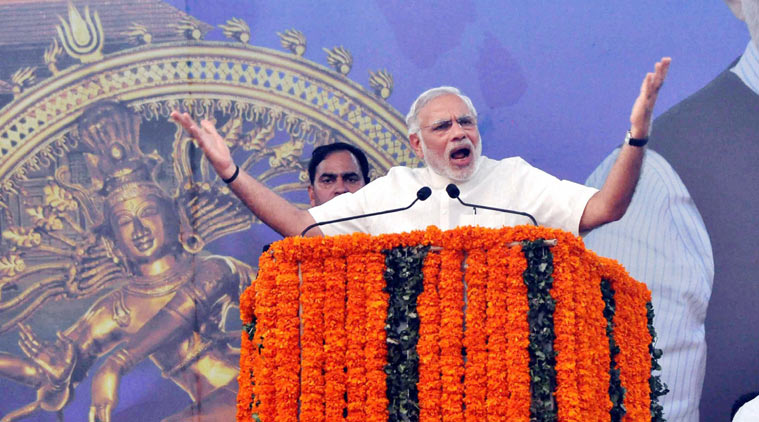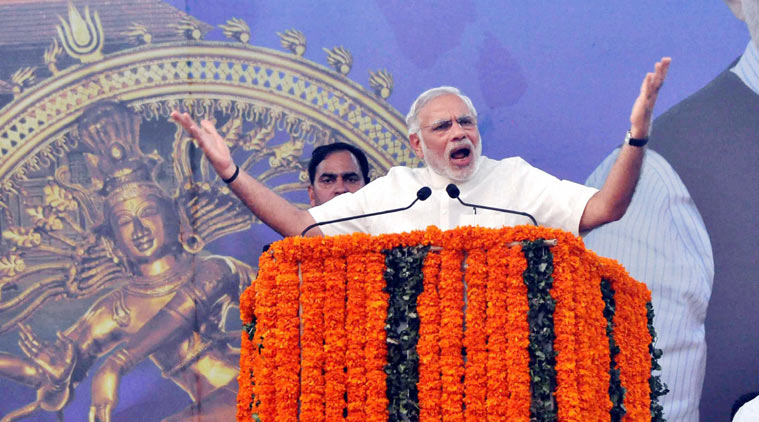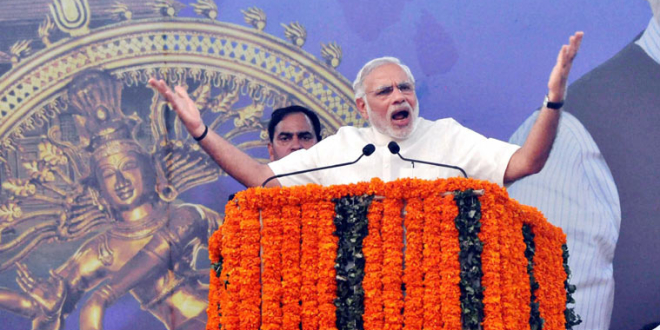
 Of Prime Minister Narendra Modi’s three Ds — democracy, demography and demand — democracy is hobbling under the weight of its own conflicts.
Of Prime Minister Narendra Modi’s three Ds — democracy, demography and demand — democracy is hobbling under the weight of its own conflicts.
The Indian republic seems stuck in quicksand of its own making. It trudges along, powered by people with long experience in adapting to dysfunctional systems. But hope that the churn of the last few years would lead to political maturity, institutional regeneration, economic dynamism and new social relations is fast dissipating. We had reached a point where the long run had caught up with us; short-term palliatives were not going to be enough to confront the enormity of our development challenges. But instead of a cycle of regeneration, there is now a potential storm gathering from many directions that threatens to cloud India’s prospects.
Take the political storm first. The political immaturity of India’s ruling parties at display is enough to the dent the confidence of the most ardent optimist. Competition, even a degree of mudslinging, is the life of a democracy. But we have taken it to unconscionable extremes and tied it to petty causes. The BJP had a historic mandate to set a new tone in politics. As a government, it should go after corruption. But this quest would be more credible if it applied the same standards to the ruling party, as to the Opposition, if it did not reek of vendetta against opponents and protection of one’s own. What you get is not a polity on the path of regeneration, but a state at the mercy of arbitrary will.
The Congress continues to show the most shocking subordination of the political to the personal that has marred its history. Its charges against the BJP would be far more credible, and it would cut a sympathetic political force, if it were not adamant about sabotaging every institution for the protection of the first family. The courts will decide the truth of the National Herald case. But the Congress’s protestations that it is blocking Parliament to defend some high principle are contemptibly laughable. The AAP has been transformed from a harbinger of progressive institutional change to a party with many routine pathologies of our political system. The regional parties, with some exceptions, provide a balance of power but little else. A political system with this degree of mutual recrimination, a sense of vulnerability because of complicity in acts of corruption and a default political strategy of blockade and vendetta that permits little constructive dialogue is stalling India.
The economic storm that awaits is being largely ignored. Of Prime Minister Narendra Modi’s three Ds — democracy, demography and demand — democracy is hobbling under the weight of its own conflicts. Demand is virtually crashing. Exports are down and are likely to remain so for a while; rural consumption in stagnating or in decline; effective social sector spending is slowing down. There is some creditable movement in ministries like railways and power. But huge doubts linger over the government’s ability to inspire confidence in private investors. The government has caught the UPA disease. It used to veer from ad hoc explanation to ad hoc explanation on inflation; so does this government on why private investment is not picking up. After the RBI cut interest rates, its last ad hoc hope was also blown sky high. The fact is the government itself does not have clear analytical handle on the economy.
Can you blame investors for thinking they do not know what world they are actually entering? The response to investor concern is the same combination of yet another project proposal or an exhortation to take risk. What the government does not get is that the real challenge is stagnating demand, and the absence of a framework that can convince anyone that this government’s economic and regulatory philosophy is up to the task is enough to make investors nervous.
The fact that this economic stagnation will manifest itself most in rural India will also exacerbate the potential for a growing social storm. The issue is under the radar, but soon there will be immense pressure from parties like the RJD to release the results of the caste census and rejig reservation policy accordingly. Hardik Patel was a canary in the mine. It would be complacent to assume the social faultlines around caste have settled into some kind of equilibrium, and we can now move on. The heady combination of rural discontent and social faultlines will grow. How the political system will negotiate these alignments is an open question. The so-called toleration debate has quietened for the moment. The issue was never whether the majority of Indians are tolerant; it was whether the incentives for those in public office or politics to communalise politics are increasing or diminishing. All the incentives on the ground in Uttar Pradesh, for instance, suggest that communalisation is deepening. The BJP is not the only party to blame. But the aspiration of a new India to imagine a new conception of citizenship that detached rights from the claims and hierarchies of identity is going for a toss. In short, the heady potential of identity politics will yet make for another storm.
The institutional quagmire has been written about to death. Not a single institution is on the pathway to serious regeneration: Parliament, bureaucracy, courts, police and regulatory as well as investigative agencies. Equally worryingly, the challenges of development that we face, from urbanisation to the environment, technology to education, require institutions to mediate complex forms of knowledge and elicit widespread social acceptance. The biggest question mark over India is the ability of its institutions to do just that. It could be argued that in significant ways, the quality-of-life gains of growth are being severely constrained by this deep mismatch between institutional design, politics and developmental needs.
The last election was fought against the backdrop of plutocracy and paralysis. The battle among the plutocrats is still playing out in a form that spells institutional destruction. The paralysis of leadership has been replaced by a different kind of paralysis. Overt centralisation is undercutting the effectiveness of government. The challenges of plutocracy and paralysis have not been resolved, but these are overlaid by a sense of economic anxiety greater than we recognise, and social faultlines that will bubble up faster than we think. A perfect storm is about to brew while our politics continue to fiddle to the tune of institutional recrimination.
![]()
Source: New feed






